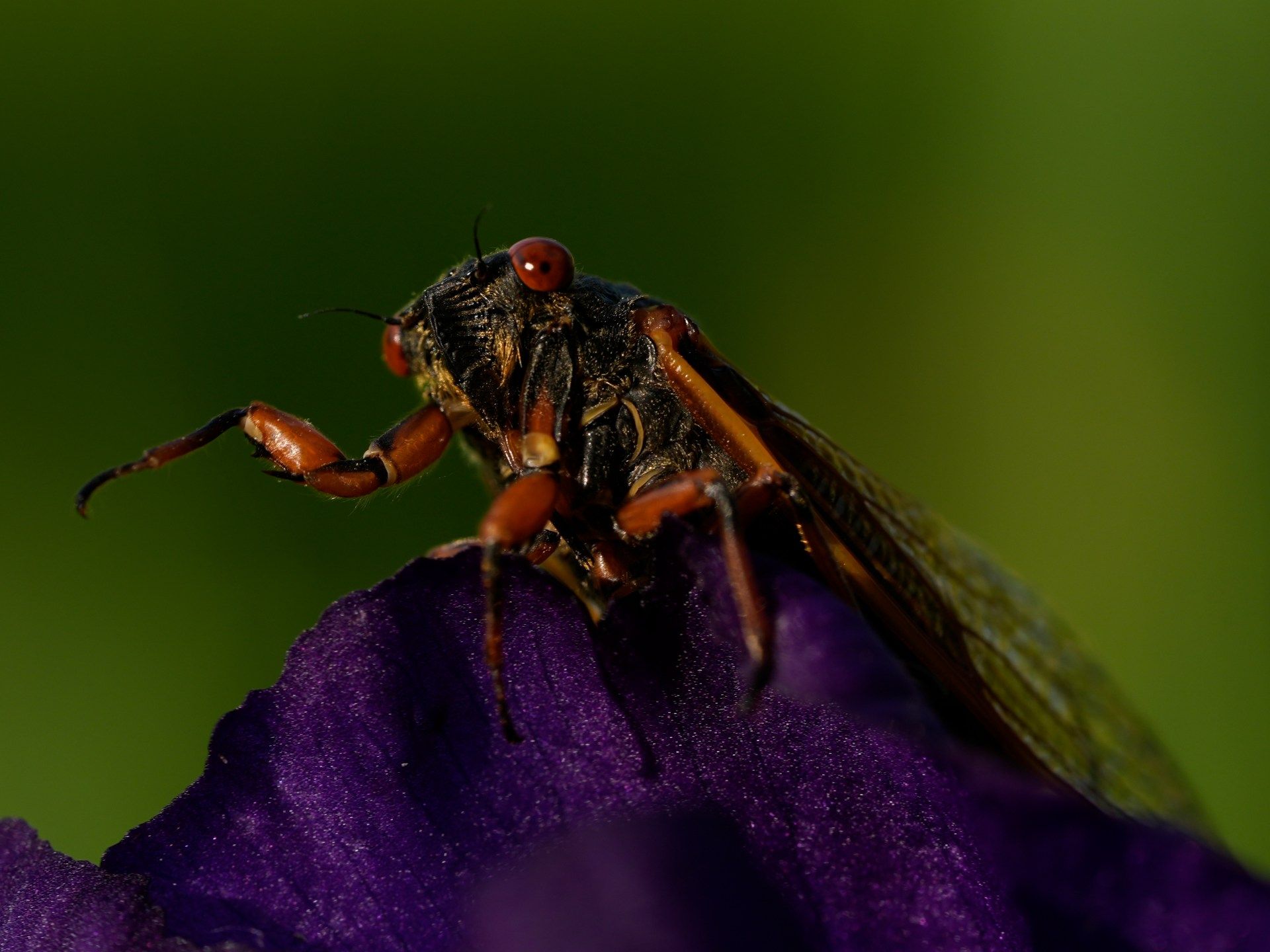A convergence that occurs once every 221 years between two generations of periodical cicadas is emerging at the same time in the United States. The great effect of cicadas is their large numbers. Billions of people are expected to populate 16 states between mid-to-late June. They can be overwhelming, messy and noisy.
But individually, up close and personal, a cicada has splashes of color, subtle shapes and that special something that some scientists and artists say translates into beauty.
Periodical cicadas are “more otherworldly looking” than other insects, and the fact that they come out every 13 to 17 years adds to their appeal, making them “look like something out of a science fiction movie,” said Jonathan Monaghan, a Washington resident. DC-based visual artist.
“Up close, there is a subtle beauty, particularly with her vibrant cadmium red eyes,” Monaghan said. “Visually, they are at their best when newly molted because there is more contrast in their bodies, showing some really interesting patterns. Overall, though, I still think they look pretty ridiculous.”
When collage artist Luis Martín, a self-described artistic engineer from Brooklyn, New York, first saw cicadas, he was fascinated.
“They were so beautiful and diaphanous that I fell in love,” said Martin, who sported a cicada tie during a Zoom interview. “She looked like a fairy.”
But, he said, they also look scary.
“It kind of goes back to these beautiful colors that we tend to think are kind of ugly, right? Because they're brown, they're kind of metallic, kind of like aliens,” Martin said. “As a brown person, I find them absolutely beautiful. “I can totally see myself in them.”
Scientists are even more mesmerized.
“There are many things in the world to be scared about today. Cicadas are not one of them,” said Gene Kritsky, a biologist at Mount St Joseph University who wrote a book about this year's double appearance. “They are beautiful insects. They have red eyes, black bodies, orange veins on these membranous wings. I love the way they appear in these big numbers. I like being able to predict when they will come out. It is always a scientific experiment,” he added.












